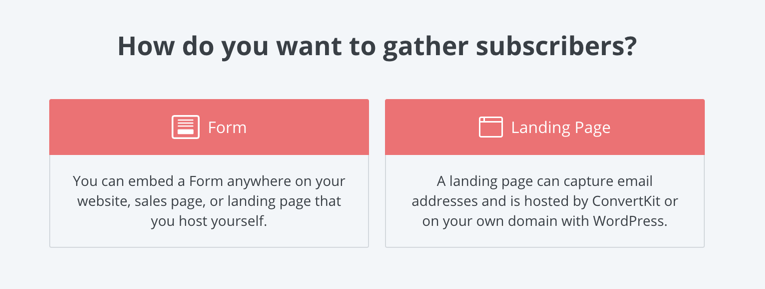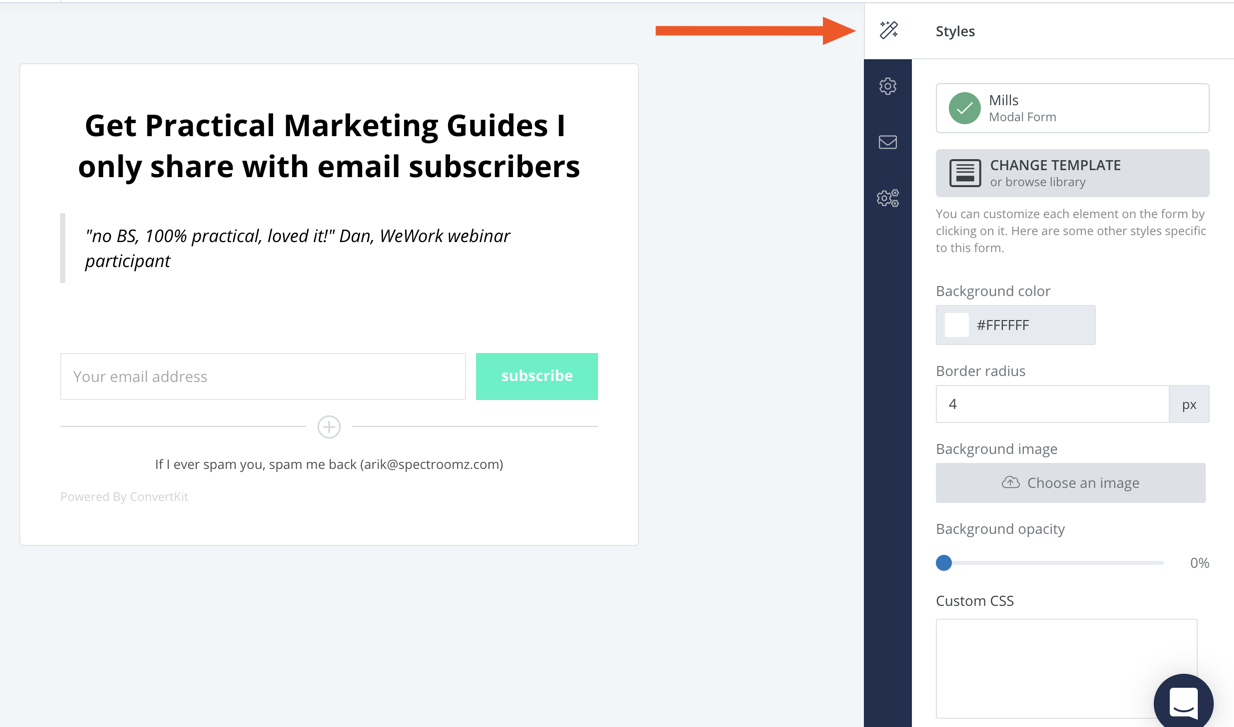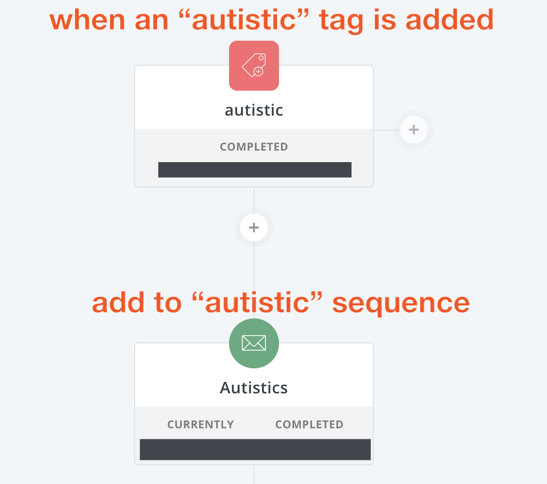ConvertKit Review
By: Arik Marmorstein, Spectroomz founder
This is a full review of the email marketing and audience building tool ConvertKit which I have been using in the recent several months (Fair disclosure: I'm compensated as an affiliate for ConvertKit, but this review is honest and professional).
Contents:
Features - What am I using it for (including important feature updates as of November 2020)
This post also includes links to:
A Saas SEO guide
Mixmax review
Lead generation Ideas
Let’s start.
What Is ConvertKit
ConvertKit is an email marketing tool for startups, businesses and bloggers. They call it “online creators”. Their set of tools enables you to capture emails of visitors on your site, send a set of emails to new subscribers, manage your subscribers, send single mass email campaigns and automate your email marketing based on different types of subscribers.
Features - What Am I using it for
Capturing emails:
In the landing pages and forms section you can create either landing pages or forms to capture emails. The landing pages can be hosted on your Wordpress website or in a ConvertKit URL.
So far I have created forms to capture emails on my site. You have several types of forms you can create, based on how you want it to appear.
In the forms section itself you have 4 subsections.
The style - here you adjust the look & feel of the form, edit the text and even add your own custom CSS.
Settings - here you can:
Adjust the URL (in case you want to share this form directly)
Edit the text subscribers see after they subscribe or set user redirect URL.
Set when people will see the form (when they show exit intent, if they scroll a certain minimum % of your post or time-based).
Set in which devices it will be shown and in which frequency.
What happens after subscription: Set and edit the email confirmation sent to subscribers (you can also decide not to show it, but it’s not recommended).
Advanced settings: set if and when returning visitors who have already subscribed see your form.
Once you are done, you have several ways to embed the form:
You also have a section in which you can see reports for your form:
Impressions
Subscribers
Conversion rate
Top referrals
You can export everything to CSV.
Automations - Sequences
What are sequences?
Sequence is a series of emails that are sent automatically to specific subscribers (based on different criteria such as the type of subscribers).
For example, Spectroomz is a freelancing platform for autistic people focused on SEO services. New autistic people who sign up to Spectroomz or sign up to our newsletter will get a set of helpful emails in a pre-scheduled order. That’s very helpful because I can onboard new users with emails I previously sent in my weekly newsletter.
You can decide in which days and hour your emails will or won’t be sent
And you also have reports and statistics for each email in the sequence so you can remove the worst performing emails or promote the interesting ones.
How to automate sequences - visual automations
In the automations section you can automate different tasks based on different triggers.
Here’re a few examples:
Send a sequence when new subscribers subscribe to a form. You can send a different sequence based on the type of form your subscriber subscribed to. For example, on Spectroomz I have two main types of users. Autistic freelancers and potential clients who hire them. I have different forms for each group and I send different content to each.
Add a specific tag to subscribers based on their source. On Spectroomz some subscribers join through a ConvertKit from, and some are leads generated through articles and Typeform quizzes such as the 32 remote (work from home) jobs for autisitc people. Using Zapier I connect between the Typeform quiz and ConvertKit and add the tags to subscribers from Typeform.
Send a sequence when a new tag is added.
Send a sequence or add a tag following a purchase.
Like its name, creating the automations is pretty straightforward. Here’s an example to the automation I created when a new autistic freelancer joins:
Sending broadcasts:
What are broadcasts
Broadcasts are email campaigns sent to multiple recipients at once. They have a one-time nature, as opposed to sequences. Weekly newsletters with news about your company is a good broadcast use case.
How to send a broadcast with ConvertKit
There are 3 steps for sending a broadcast:
Step one - choose who are the recipients. You can filter by tags, segments (I’ll explain the difference between those), demographics, date of subscription and more.
Step two - write the email’s content, choose the email template and set an A/B testing for the subject line if you want.
Tip: How to personalize an email in convert kit?
When you collect emails through ConvertKit’s forms, you can collect the name as well.
To add the name to the email simply add {{ subscriber.first_name }} wherever you want the name to appear (including the subject link).
Step 3 - Preview the email, send immediately or schedule for later.
Once the email has been sent you can review stats of your broadcast such as open rate, click rate, unsubscribes, A/B test results and top links clicked.
You can also drill down into the specific subscribers who did each action and add them a tag or add them to a specific sequence. For example, this sequence was sent to promote my SEO course and I can add those who opened the email to a sequence of 2 additional emails which elaborate on the course since they showed interest.
Managing your subscribers:
ConvertKit lets you manage all your subscribers in one admin. You can see your weekly new subscribers, your total subscribers and purchases.
You can also tag your different subscribers and add them into different segments. That will help you send relevant emails to different types of subscribers, increase the open rate and the click through rate (CTR), as well as decrease unsubscribe rate.
What is the difference between a tag and a segment
Let’s use an example to explain that. Specroomz has two kind of users. Autistic freelancers and clients who post SEO projects. Each of these types would be a different segment. But under each segment we have different people as well. Some freelancers are writers, and some provide SEO keyword research services. I would tag each one of them differently and send different content.
Additional features in the subscribers section:
Choose multiple subscribers and add/remove them manually into/from a sequence.
Export subscribers
Unsubscribe them
September 2020 feature update:
On September 2020 ConvertKit released additional features which required an upgrade to the pro plan. Here’re a few worth sharing:
Engagement distribution of your subscribers - you see a distribution of the engagement levels of your subscribers. It helps because you can tag users who are not active at all (“cold subscribers”) and ask them if they still want to be subscribed.
If they don’t respond, unsubscribe them and increase your engagement levels. A more engaged list is better than a less engaged one, even if it’s smaller.
ConvertKit’s engagement report screenshot
Deliverability Report of your sequences and broadcasts - see the open and click rates of your broadcasts and sequences across a period of time.
Sequence deliverability report
Newsletter referral program - Convertkit collaborated with Sparkloop which enables you to create a referral program for your subscribers in order to incentivize them to share your newsletter.
Sync your subscribers with Facebook’s custom audiences - when you advertise on Facebook you can create audiences (and target) based on people’s emails. You can expend those with lookalike audience too. If you are looking to advertise to your email subscribers or similar people to them on Facebook and Instagram, ConvertKit’s new feature will make your life easier.
November 2020 feature update - ConvertKit Commerce
So these are relatively big news. So far ConvertKit was a tool for creators to communicate with their fans, subscribers and customers.
ConvertKit just started to enable creators sell digital products and subscriptions directly through ConvertKit. No need to use Gumroad, Podia or other Patreon Alternatives. You can do everything directly on ConvertKit (as long as you are in a Stripe-friendly country).
This enables you to tailor your messaging to existing and potential customers based on their commerce engagement with your product.
For example, if someone downloads your lead generation ebook and indicates they have advanced knowledge in the ebook’s domain, you can send an automate offer to purchase the advance course.
If they are beginners and have no knowledge about the domain of your ebook, you can automatically pitch the beginners course. Nice ah?
Learn what is ConvertKit Commerce here.
Zapier Integration
Zapier helps you automate different actions between different services without writing code. For example, add people who signed up for your course on Thinkific or Teachable to one of your sequences on ConvertKit.
I also use Zapier to add a tag to subscribers from my Typeform quizzes, and then using visuals automations on ConvertKit, I add them to relevant sequences.
ConvertKit pricing (including ConvertKit vs mailchimp)
Free plan - ConvertKit has a free plan in which you can send broadcasts to up to 1,000 subscribers and gather subscribers using the forms and landing pages .
Paid plan - Includes all features. Pricing is subscribers-based.
For the first 1,000 subscribers you’ll pay $ 0.29/subscriber
Up to 10,000 subscribers you’ll pay $ 0.11/subscriber (on Mailchimp you’ll pay $0.29c)
For up to 55,000 subscribers you’ll pay $0.068/subscriber (on Mailchimp you’ll pay $0.086)
For up to 205,000 subscribers you’ll pay $0.062/subscriber (on Mailchimp - $0.054 on up to 200K)
For up to 345,000 subscribers you’ll pay $0.061/subscriber (contact Mailchimp)
For up to 900,000 subscribers you’ll pay $0.044/subscriber (contact Mailchimp)
Customer service (including Mailchimp vs ConvertKit)
I reached out to ConvertKit’s support several times.
The first time they responded to my issue 4 hours after I reached out.
On the second time, I reached with a less traditional request and got a request 6 hours later. I would say both are reasonable (yet not great).
I was previously a Mailchimp user and twice they got my account locked due to an automatic tool they use (all my subscribers are real, I don’t manipulate this in any way). They responded days after I reached out and didn’t explain/help with the issue.
Improvements needed
Improvement 1: The forms aren’t always mobile friendly. In some cases on mobile my forms missed the exit (X) button. This is not user friendly and therefore can hurt your SEO. It would be easy to see a mobile preview when creating the landing pages, but you can only see the desktop preview.
Popup screenshot on mobile after adjustments
Desktop version popup - text too small so it will be mobile friendly
Improvement 2 - What I miss about sequences is the ability to add a condition for the next email to be sent.
For example, during my SEO backlink building I’d like to send a sequence of emails to websites who might be interested to link to my article.
I have seen significantly better conversion rates when I send a set of 3 emails to those who didn’t reply to my email (the condition is: if email wasn’t replied within X days>>send the next email). Using Mixmax I can do that, but with ConvertKit I can’t do it (easily. I can workaround it, but it’s daunting).
What I’m after is basically a mix between a Broadcast to a Sequence, but even with ConvertKit’s broadcast I can only resend once to those who didn’t open.
Improvement 3 [update - solved] - Grammarly doesn’t work well with their editor. I’d change that.
Improvement 4 [2021 update] - The landing pages are not well designed comparing to how a well converting landing page should be.
For example, if you are looking to generate leads, you would want the landing page to have an email field above the fold as well as below it. I researched several landing pages on ConverKit and in all of them the email field was below the fold (on Mobile).
Also, The editing options are extremely limited comparing to other landing page creation tools like Unbounce. For example, I can’t see a mobile preview of my landing page.
I understand ConvertKit isn’t a landing page company, but if you offer a solution it should align with best practices.
Convertkit Alternatvies
I would say the top Convertkit alternatives are Aweber Mailchimp, Activecampaign, and Drip.
When I do some keyword research I can see what are the most common comparisons to Convertkit. That’s helpful to form a list of alternatives. Here’re the popular searches:
ConvertKit vs Mailchimp (and MailChimp vs ConvertKit - 1,600 search/month)
Convertkit vs Activecampaign (250 searches/month).
ConvertKit vs Drip (200 searches/month).
Aweber vs Convertkit (100 searches/month)
Do I recommend ConvertKit?
Although there are improvements needed, I defiantly recommend them and use them for almost a year now. It’s an easy to use email marketing tool that enables me to automate email marketing efforts from different sources. That’s important. It is a less polished product when you compare it to Mailchimp, but with the core functionality, better pricing and better customer support it’s an email marketing tool I recommend. You can learn more here.






















